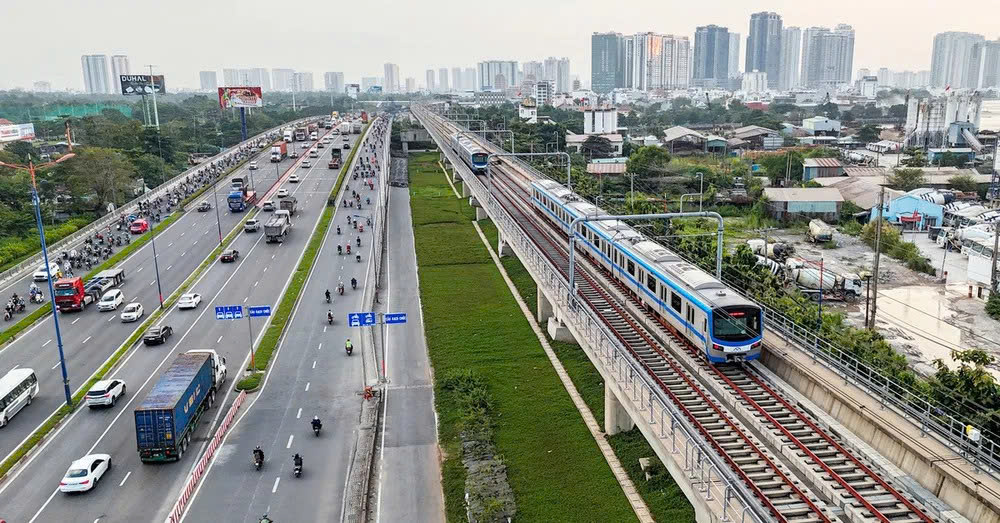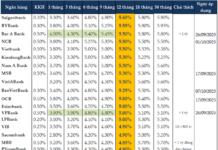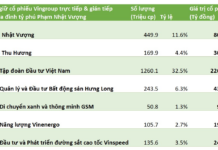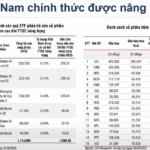According to Mr. Hai, the development orientation of Ho Chi Minh City (new) needs to closely follow five main pillars:
First, drive Ho Chi Minh City’s economic growth with breakthrough initiatives. Specifically, focus on developing high-tech industries and smart manufacturing following the University City and Quadruple Helix (Government-University-Industry-Community) models. In parallel, prioritize the development of high-quality services (international finance and technology) and marine economy (deep-sea port cluster, logistics, energy, and eco-tourism).
Based on this, Ho Chi Minh City will form five concentrated economic development zones:
Industrial production zone (in wards and communes belonging to the former Binh Duong province); Innovation and high-tech zone (Tang Nhon Phu, Dong Hoa, Binh Duong, and Nha Be); Central financial and technological zone (Saigon and Thu Thiem); Specialized industrial, maritime, and logistics zone (Phu My, Tan Phuoc, and Long Son); Marine and island ecological zone (Vung Tau, Tam Thang, Phuoc Thang, Phuoc Hai, Ho Tram, Can Gio, and Con Dao)
Second, restructure the development areas to leverage existing advantages and avoid overlapping competition among localities before the merger. This will optimize the allocation of social resources.
Third, enhance connectivity between areas through modern transportation infrastructure and comprehensive digital transformation (digital government, digital society, and digital economy)
Fourth, promote sharing in the exploitation and operation of technical and social infrastructure to increase investment efficiency.
Fifth, synchronize infrastructure development between areas to ensure balance, stability, and harmony across the entire urban area.

According to the orientation, economic development and population distribution must be linked to two principles: Industrial, commercial, and service activities should be connected to the road system (beltways and expressways) and freight railways. Population distribution should be linked to passenger railway stations (national and urban) and should aim to develop according to the TOD (Transit-Oriented Development) model.
Mr. Pham Tran Hai also pointed out the infrastructure network in the areas that will be focused on after the merger of Ho Chi Minh City, Binh Duong, and Ba Ria-Vung Tau.
National and Urban Railway Network
National railways: 8 routes, totaling 585km, including important routes such as the North-South high-speed railway, Ho Chi Minh City – Can Tho, Ho Chi Minh City – Tay Ninh, Bien Hoa – Vung Tau, Thu Thiem – Long Thanh, and connecting Hiep Phuoc and Cai Mep ports.
Urban railways: A total of 1,012km, of which the old Ho Chi Minh City has 582km (13 routes), Binh Duong has 305km (12 routes), and Ba Ria-Vung Tau has 125km (3 routes)
In the former Binh Duong province, there are 12 routes with a total of 305km. Route 1: New City of Binh Duong – Ho Chi Minh City (Suoi Tien Station), 31.6km long. Route 2: Thu Dau Mot – Ho Chi Minh City (Hiep Binh Phuoc), 23.3km long. Route 3 (Section 1): Tan Uyen – Ho Chi Minh City (Go Dua), 23.3km long, connecting to Route 6 of Ho Chi Minh City.
In the former Ba Ria-Vung Tau province, there are 3 routes with a total of 125km: Route 1: Circling Vung Tau city, 20km long. Route 2: Vung Tau – Long Hai – Phuoc Hai – Binh Chau, 65km long. Route 3: Vung Tau – Ba Ria – Phu My, 40km long, connecting to the Thu Thiem – Long Thanh route.
Thus, after the merger, the new Ho Chi Minh City will possess an urban railway network of over 1,000km – a scale unmatched in Vietnam.
However, according to Mr. Hai, the most significant challenge at present is investment capital. Other challenges include human resource development, railway industry promotion, compensation and resettlement, and establishing a suitable management and operation model for this massive undertaking.
Sharing the same perspective on the market prospects after the administrative merger, Mr. Su Ngoc Khuong, Senior Director of Investment at Savills Vietnam, stated that the general planning of Ho Chi Minh City (new) will have to be rearranged and reshaped to define the growth objectives of an urban area with a population of over 14 million.
From a real estate market perspective, the post-merger development should be based on the competitive advantages of each region. In the next 3-5 years, the structure of real estate products and segments is not expected to change significantly. The most critical issue is the infrastructure planning, especially transportation infrastructure, which will play a pivotal role in reshaping the real estate product structure after the merger.
“With a governance model catering to a population of 14 million, I believe there will be numerous challenges to address, including the story of connecting transportation infrastructure. The transportation system will be the backbone for the movement of goods in the economy and will significantly impact the transformation of the real estate market,” emphasized the Savills expert.
The Ultimate Guide to Choosing the Best Property Investment: Unlock Exclusive Benefits of Up to 12.5%
Happy One Central offers investors a unique opportunity to reap immediate benefits. With our commitment to leaseback, complimentary furniture packages, and waived management fees, investors can enjoy peace of mind and a steady income stream from day one of ownership, eliminating the typical wait for project completion.
The Ultimate Guide to Cart Abandonment: How The 826 EC Reduces Cart Abandonment to Under 10%
The red-book land market adjacent to Phu My Hung continues to attract attention with a high volume of transactions. With a limited supply and reasonable pricing, The 826 EC Commercial City has become a sought-after choice for investors and homebuyers alike.
The New Landed Property Prices in Ho Chi Minh City Reach 230 Million VND per square meter
The real estate market in Ho Chi Minh City is set for a significant transformation, presenting immense opportunities for growth and expansion. The city’s merger paves the way for a vibrant future, with enhanced connectivity that will spur the development of surrounding satellite towns. This strategic move is a game-changer, unlocking the potential for a thriving and interconnected urban landscape.













































